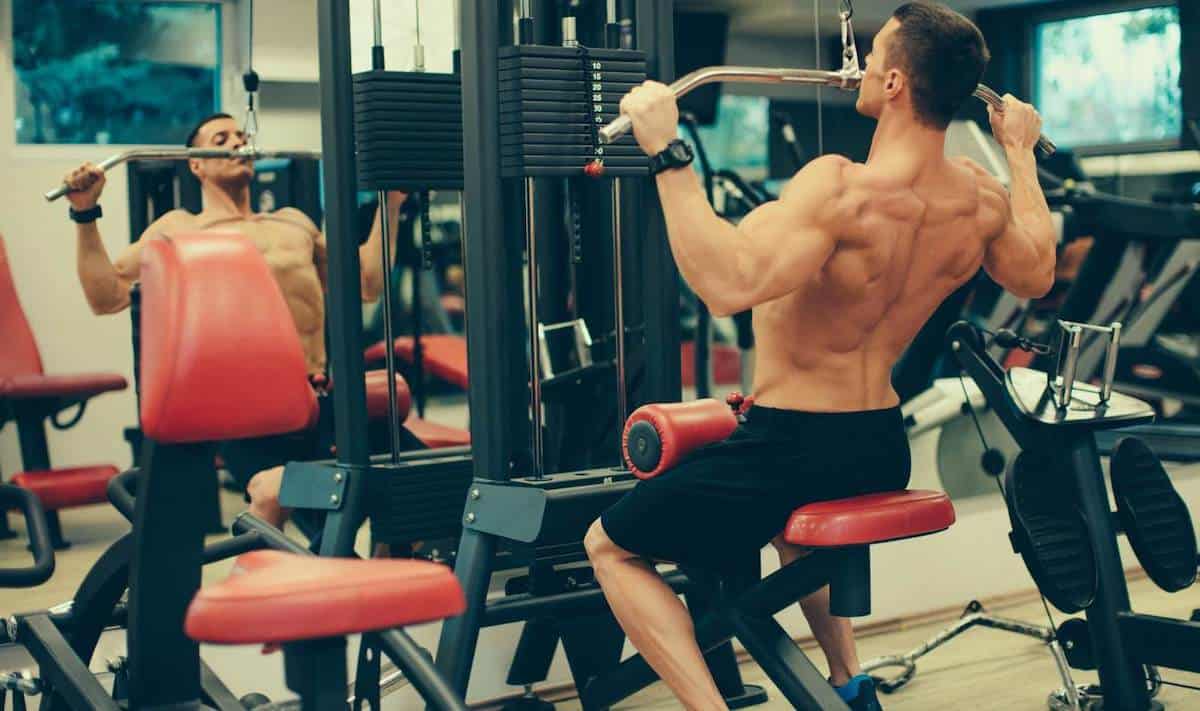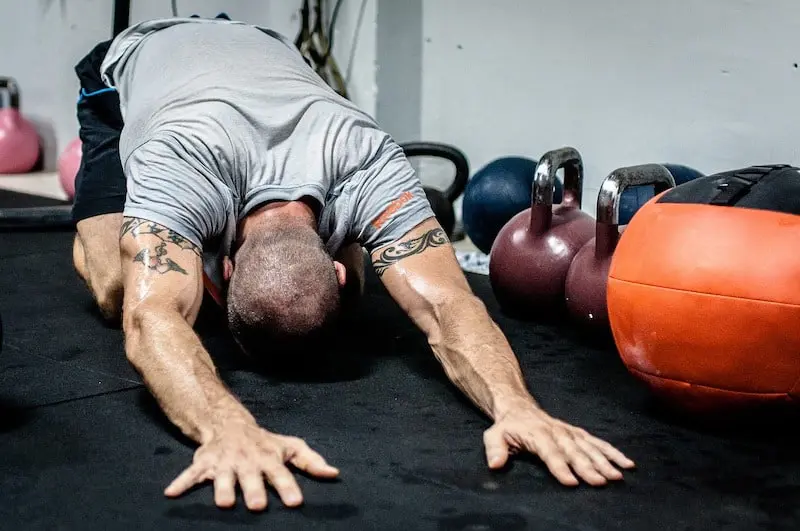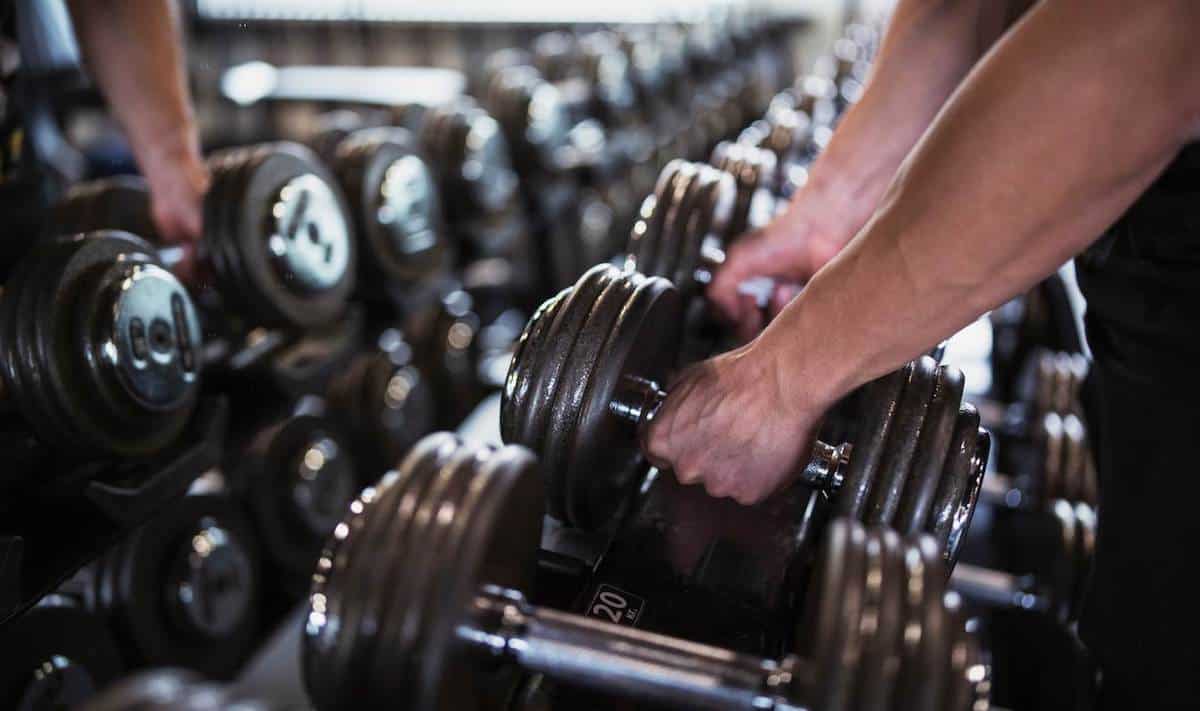
The best online fitness resource you'll ever need. We filter out the BS to ensure you meet your health and fitness goals!

The best online fitness resource you'll ever need. We filter out the BS to ensure you meet your health and fitness goals!

If you’re looking for a simple workout routine that has demonstrated results in building muscle without working out long hours every day of the week, then check out our 3 Day Push Pull Legs Workout Routine with a downloadable PDF version.
You may be thinking…
…”How can just three workouts a week get me bigger muscles?”
…”Don’t I need a 6 day program? Something more than a 3 day??”
The answer is “no”, as long as you apply the program correctly.
Jump to the program now!
Alternatively, you can download the free PDF version of the program using the link below:
| Program style | Resistance training |
| Workout duration | 1-2 hours |
| Scheduling | 3 days a week |
| Goal | Build muscle |
| Level | Beginners and experienced |
| Target Gender | Male and Female |
The push pull legs split is a workout routine that involves grouping exercises into three categories: push workouts, pull workouts, and leg workouts.
Push workouts focus on pushing weight away from your body, while pull workouts focus on pulling weight toward your body, and leg workouts focus on working your lower body.
By doing this, you can make sure you’re working all your muscles in a balanced way.
The push pull legs split is a simple and effective way to work out and get jacked. So, if you want to make gains and still have time for the important things in life, give it a try.
The push pull legs split has been shown to offer numerous benefits, and below are some of the primary ones worth highlighting.
By splitting your exercises into pushing movements, pulling movements, and leg exercises, you can ensure that you’re hitting all the major muscle groups evenly. This means you won’t be all out of whack, with a big chest and scrawny legs, for example.
I also like the way a 3 Day PPL addresses the major joints of the body, namely the hips, knees, and shoulders. It’s an underemphasized benefit of the PPL format.
Here’s why.
Your skeletal muscles exert counteractive forces on your joints. Training one side without the other leads to imbalances that rob function and strength and can lead to some pretty debilitating situations if left unchecked.
The most common of these that I see is the overemphasis on chest and lats, combined with a lack of emphasis on muscles that pull shoulders in the opposite direction, namely posterior shoulder muscles, and the middle and lower traps.
Rounded shoulders, forward head posture, and hyper-kyphosis of the thoracic spine (overly-rounded upper back) result, which in turn diminishes lung capacity and actually makes you shorter.
The push pull legs split is a badass way to maximize your workout time. By organizing your exercises into three categories, you can get in and out of the gym more efficiently.
No more wandering around aimlessly, trying to decide what to do next!
This can be especially beneficial for those with busy schedules who want to optimize their training without sacrificing other important aspects of their life.
By focusing on compound movements that work multiple muscle groups at once, the 3 day push pull legs split can help reduce the risk of injury.
Compound exercises like squats, lunges, bench press, and pull-ups not only build more muscle but also improve your overall movement patterns and motor control.
By improving your technique and movement quality, you’ll be less likely to experience joint pain or muscle strains, and you’ll be able to lift heavier weights with more confidence.
If you’re still unsure if this program is for you, take our quick qualifying quiz to find out:
This program is for you if any of the following applies to you:
The 3 Day PPL routine you’ll find here is very close to what I do myself. After 43 years of resistance training–including a brief period of competing in powerlifting–this is what works best for me.
I travel professionally so I can’t say for sure exactly which days I’ll get into the gym. I belong to a chain of commercial gyms that let me work out when I travel if my schedule allows it.
My job requires as many as 60 hours per week, with early mornings and late nights. But not always.
I’m also 63 so recovery is important. It’s super-easy to overtrain as you get older.
However, it’s also really important to kill it in the gym, doing exercises with clinically-proven track records of building muscle, because…
…starting about age 30, we all begin to lose muscle mass. At my age, I have to add 4% muscle mass annually just to realize a 1% gain each year.
You can expect to get doing exercises that–when properly performed to mechanical failure–will make muscles grow.
If you follow the program and application properly, you can expect to see muscle development after a few weeks.
Newcomers to the gym can expect to see rapid gains up front. Veterans to the iron game not so much; it may take several weeks.
For either group, make sure you’re concentrating on every rep of every set, challenging yourself to do the exercises better each time and pushing your muscles to their limits at the end of your working sets.
You can also expect to work out at least three times a week.
Don’t turn this into a 6 day program where you do each routine twice. If you’re doing the program right and as intensely as you should, more than three days a week will lead to over-training.
Related: For a 6 Day Program, try our The Ultimate 6 Day Push Pull Legs Workout Routine (Free PDF)
Symptoms of over-training include sleep disruption, irritability, and lowered immune system. Got a cold you can’t ever seem to shake?
Another hidden side effect of over-training is loss of enthusiasm. If you’re one of those people who love the iron and steel like I do, and there are days you just couldn’t care less about it… that’s a sign you’re over-training.
Recovery is as important as working out.
The 3 Day Push-Pull-Leg (PPL) routine provides lots of flexibility for which day of the week you head to the gym.
The second thing I love best about our 3-Day PPL program is the intensity it allows.
Because there are fewer days per week in the gym–meaning, more rest days–you can absolutely kill your workouts, be crazy sore or fatigued the next day, and then be recovered in another day or two and enthusiastic about getting back to the iron pile.
Time for a quick public service announcement:
Do yourself and the rest of gym humanity a favor and ignore the “Never skip a Monday” people. Please. For the sake of all that’s made of iron and steel.
I get where these voices come from. Society has gotten pretty soft and discipline is at a premium.
But I absolutely promise you will not wilt, shrivel into a mummy, or spontaneously combust if you don’t go to the gym on Mondays.
With that said, your push, pull, and legs workouts will each take 1 day out of the 3 day schedule:
| Day | Split |
|---|---|
| Push | Chest, Anterior shoulders, Triceps |
| Pull | Back (Lats, Trapezius, Posterior shoulders) |
| Legs | Quads, Hams, Lower legs, Glutes (and some lower back stuff) |
Here is the old school classic Monday-Wednesday-Friday (or Tuesday-Thursday-Saturday) split schedule made popular in the 70s by Joe Weider.
I started off this way. It’s great for noobs and experienced lifters alike.
| Day | Split | Body part(s) |
|---|---|---|
| 1 | Push | Chest, Anterior shoulders, Triceps |
| 2 | Rest | |
| 3 | Pull | Back (Lats, Trapezius, Posterior shoulders) & Biceps |
| 4 | Rest | |
| 5 | Legs | Quads, Hams, Lower legs, Glutes (and some lower back stuff) |
| 6 | Rest | |
| 7 | Rest |
Let’s look at another scenario. This is now the way I apply my 3 Day PPL:
| Day | Split | Body part(s) |
|---|---|---|
| 1 | Legs | Quads, Hams, Lower legs, Glutes (and some lower back stuff) |
| 2 | Rest | |
| 3 | Push | Chest, Anterior shoulders, Triceps |
| 4 | Rest | |
| 5 | Pull | Back (Lats, Trapezius, Posterior shoulders) & Biceps |
| 6 | Rest | |
| 7 | Rest |
Don’t feel obligated to do Push, then Pull, then Legs. Legs, Push, Pull is a legit way to go about it. Or Push, Legs, Pull. Just pay attention to your rest days in between.
The downloadable PDF program goes into more detail, but here are some quick summaries to show what each day calls for.
| Exercise | Set 1 | Set 2 | Set 3 | Set 4 |
|---|---|---|---|---|
| Dumbbell Bench Press | 15-20 | 10-12 | 8-10 | 8-10 |
| Underhand Dumbbell Press | 15-20 | 10-12 | 8-10 | 8-10 |
| High Incline Dumbbell Shoulder Press or Smith Machine | 15-20 | 10-12 | 8-10 | 8-10 |
| Lateral Raises, Cable or Dumbbell | 15-20 | 10-12 | 8-10 | 8-10 |
| Cable Triceps Extensions | 15-20 | 10-12 | 8-10 | 8-10 |
| Exercise | Set 1 | Set 2 | Set 3 | Set 4 |
|---|---|---|---|---|
| Dumbbell Hammer Curls or Palms-up Curls | 15-20 | 10-12 | 8-10 | 8-10 |
| Lat Pull-ins (seated 45 degrees pulling high to low) | 15-20 | 10-12 | 8-10 | 8-10 |
| Pull-ups or Lat Pulldowns | 10-12 | 10-12 | 10-12 | |
| Cable Rows | 10-12 | 10-12 | 10-12 |
| Exercise | Set 1 | Set 2 | Set 3 | Set 4 |
|---|---|---|---|---|
| Dumbbell Goblet Squats or VMO* Heel Elevated Dumbbell squats** | 15-20 | 10-12 | 8-10 | 8-10 |
| Dumbbell Lunges, Walking | 16-20*** | 16-20 | 16-20 | |
| Leg Extensions | 15-20 | 10-12 | 8-10 | |
| Romanian Deadlifts with Dumbbells | 15-20 | 10-12 | 8-10 | 8-10 |
| Leg Curls | 15-20 | 10-15 | 10-12 | 8-10 |
| Standing Calf Raises with Dumbbells | 15-20 | 15-20 | 15-20 | |
| Tibialis Anterior Raises | 20 | 20 | 20 |

Warm up before your workout to prevent injury and practice the movements. Warm-ups are important for anyone and even more crucial for older adults. If you’re a newcomer to the gym but a veteran in another sport, you’ll already understand the value of a good warm-up.
The warm-ups included in this workout program are composed of very light sets of the movements you’ll be doing during the workout, an application of the SAID Principle (Specific Adaptation to Imposed Demands).
You should also get in the habit of stretching the target muscles before actually targeting them. This program will target basically every single muscle you have in your body, so getting those muscle loose is crucial.
There’s nothing worse than getting started on a heavy set of RDLs and pulling your glutes, which could have easily been prevented with some simple stretches.

Progressive overload is a constant principle in resistance training. Universally applicable.
Progressive overload is adaptive stress applied to exercise.
If the last reps of any set are easy, raise the weight. If they’re too hard or you can’t finish the set, lower the weight.
Remember that weights are your tool for muscle growth. Your muscles can’t read the numbers on the weights, and your ego can’t make your guns grow.
Think: I’m going to the gym to accomplish something, not prove something.
Best application for this program is zero reps in reserve.
Set your weights so that the last rep of every set really is the last one you can do with good form.
For the last set or two of each exercise, the last couple of reps should be crazy hard with good form. The weight will be moving very slowly but you’ll be working hard to get it to move at all.
Raise the weight if you can do the last rep of any set with complete ease.
Use a methodical, rhythmic, pumping motion.
No fast concentric-slow eccentric, etc. Your eccentric phases should be slow and controlled…just not timed.
Under no circumstances use momentum of any kind.

If you’re training hard, you’ll need those rest days. Yes…four rest days per week isn’t extreme.
Clinical evidence supports two rest days, with the inside range being 1 day and the outside being as many as 3 days between workouts.
But it depends.
Factors such as the type of exercise performed, the intensity and duration of the workout, and your level of fitness.
Studies of interest that investigated muscle recovery time:
Overall, it appears that a recovery period of at least 48 hours is necessary for maximal muscle recovery after resistance training, although the exact recovery time can vary depending on individual factors and the specific type of exercise performed
If you feel completely recovered from a Push, Pull, or Leg day mid-week, there’s no unbreakable rule that says you can’t do another P, P, or L day during the same calendar week.
You just need to be really honest with yourself, and dialed in to what your body tells you.
Now, if you really want to get sophisticated about this stuff like a pro, think about the fatigue on your central nervous system (CNS).
That means your brain, spinal cord, and all the electro-chemical activity that goes on during and after an intense workout. A challenging shoulder day can absolutely impact your next leg day if the CNS is fatigued.

Rest a minute or two between warm-up sets. Your “working” sets will require longer rest times.
Target three minutes between sets. Spend that time analyzing the set you just did. Ask:
Then, visualize your next set.
Please. Please. Please. Please…do NOT use your time between sets to whip out your smartphone, check your social media, or snap a photo of your beastly physique.
Download our 3 Day Push Pull Legs Workout Routine PDF here: